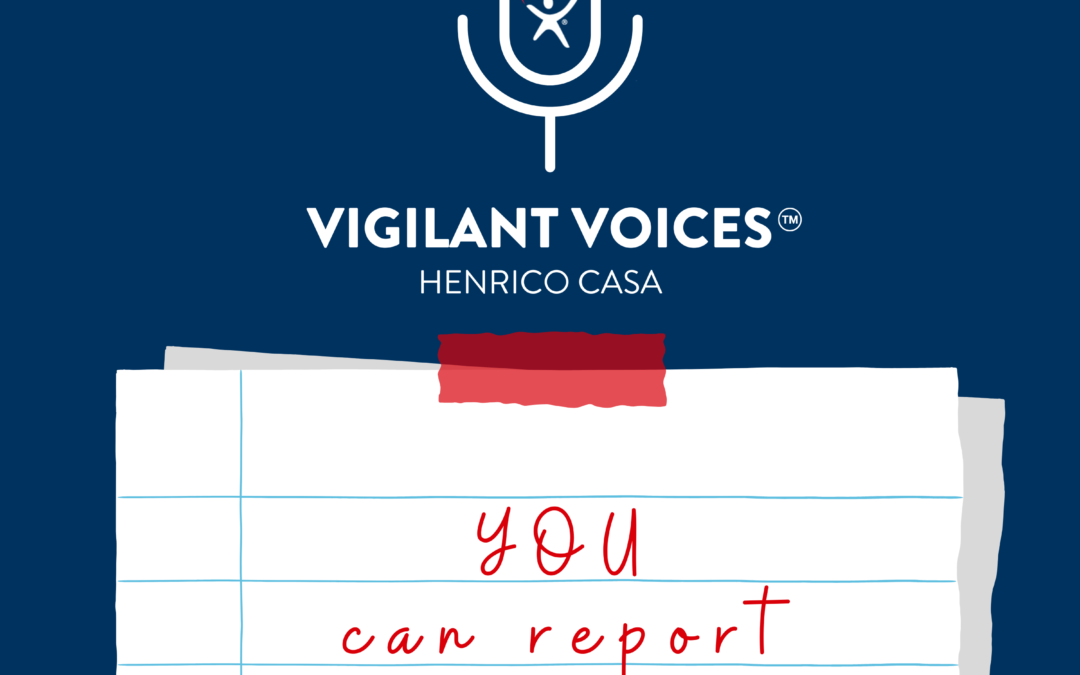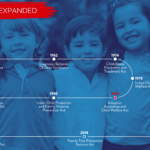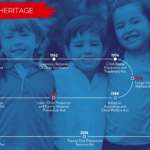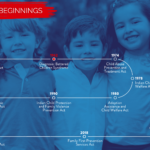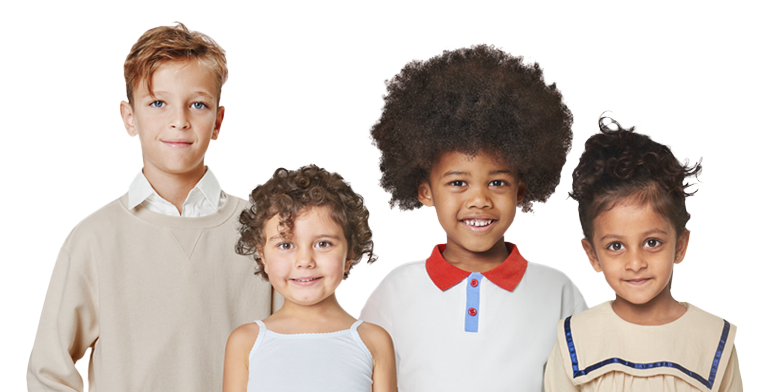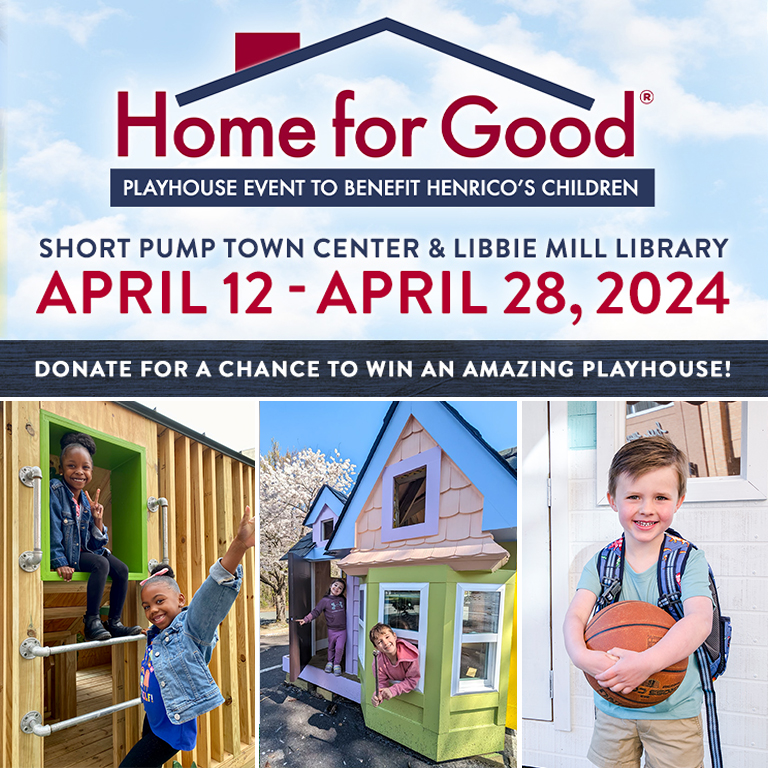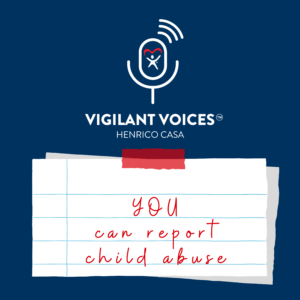
Listen to Episode 3 of the Vigilant Voices™ podcast, You Can Report Child Abuse.
Kristin Blalock: You are listening to our brand new Vigilant Voices podcast. We are always glad that you are here.
Jeannine Panzera: And just as a reminder, in our work at CASA, we have learned that it is important to KNOW about the challenges facing children and families to ensure that NO child faces abuse, neglect or trauma. And that is what this podcast is all about.
K: And now that it’s April, it is Child Abuse Prevention Month.
J: It is very important month for our agency and for the work that we do. So Kristin, I have to share that I have a goal…
K: Stop. That makes me think of the whole BHAG in the ‘Built to Last’ book. Is this a big, hairy audacious goal?
J: Dare I say, yes, it is?! My dream is that child abuse prevention can become a priority so that we can put ourselves out of work. It’s something that we say a lot in the nonprofit world, that if we could only solve the issues that so many nonprofits are doing for the vulnerable, then we could shut our doors and that would be great. I’d rather be unemployed than having to do this work. Right?
K: And that’s our vision statement at Henrico CASA, that all children live in safe and stable homes. Which leads to the question, like, how do we even ensure that a child is in fact in a safe, healthy home?
J: It’s a really good question. And we do have a role to play and we can all take this role in just being watchful and speaking up for children. And that to me is individualized, but it’s also at a community level. And so I think that as a community, to work toward that vision, we really then have to understand the system that we are working within and how the system works to protect children.
K: Definitely. Before we dive into the details though, I wanted to share a CASA story that will paint a story of how the system works and responds to child abuse and neglect. There is a family that we worked with, this family had been visited by twelve times in one year for calls related to domestic violence.
J: That’s a lot.
K: It is. Child Protective Services became aware and had a Child Protective order issued for the children. So basically that means the children were moved to a safe place quickly and their parents started receiving services from the county. We at CASA became involved to visit with the children and follow up on visitation and compliance concerns that everyone had.
J: Yeah, I mean, this story to me highlights the very important role that CPS is what we call all the time, Child Protective Services, so that’s our acronym plays in our community and they are a government agency that’s part of the Department of Social Services. They are a department that really prioritizes protecting children. And we work very closely with our social workers at Child Protective Services and the police as appropriate in these type of situations, too.
K: And that leads to the question I’m sure most of you listeners have of how does CPS become aware of a child that may be experiencing abuse or neglect? In the story we shared, it was through police involvement, but that’s not always the case.
J: Right. And I think it’s important for all of us to know that anyone can make a report to Child Protective Services, and it really is as simple as calling the hotline. And we will share information about that a little bit later, I think, in this conversation, but also in our show notes in terms of the actual phone number and ways to actually connect with them. But what CPS is looking for when there’s concerns for abuse and neglect is really three sort of very distinct types of abuse. One is physical abuse,
K: which we kind of all think of…
J: I think that’s where we probably go first. But there’s also sexual abuse, which we hear those stories. There’s emotional abuse, which is just as detrimental to a child. And then there’s this broad category of what we call neglect. So that’s denying basic needs, medical care, shelter, food. But then there’s also neglect of supervision or just abandonment of a child. So all of these types of abuse or neglect need to be reported to Child Protective Services.
K: Right. And while suspected abuse can be reported by anyone, there are categories of professionals who are mandatory reporters, which means they’re required to report suspected abuse. And teachers and doctors are examples because in theory, they’re the safe adults who are most likely, more likely than most of us to observe signs of abuse. And they’re observing those signs of abuse in a professional capacity.
J: Exactly. And what we call mandated reporting or mandated reporters are required by law to make a report when they have reasonable cause to suspect that a child is a victim of abuse or neglect. And CASA is also a mandated reporter, which is good because we have and we’re there interacting with the children. So if we ever have a concern that we are able, but need to and are mandated to report, and those mandated reporters are required to report that abuse within 24 hours. So there’s very much an enforced sense of urgency.
K: And they’re required to report suspected abuse, which is important to note, because you don’t have to know for sure.
J: Right. That’s where we lean on the professionals and our social workers who are trained in this.
K: Yeah, definitely. So, side note, listener, I don’t know how many of you know this, but the history of this concept of mandatory reporting is interesting to me. Child Protective laws are actually relatively new in our country’s history. It wasn’t until the 60s/70s that states and then the federal government put these mandatory reporting laws into place.
J: It was a law called CAPTA that really was the first time that we had earmarked funds for a lot of different programs within the child welfare system. And mandated reporting was one of them. And it is interesting because there were long protections for animal rights
K: Wow.
J: Before children and I mean, I love animals, don’t get me wrong on that, but it’s a very interesting sort of study of our history of the progression of child abuse laws going back to child labor, orphanages, different things that we felt differently about. Did children have rights? Sure. And that’s definitely evolved, but it is still evolving.
K: Okay, so someone, a mandatory reporter or any of us report suspected abuse. But then what?
J: So when CPS gets a call and concern, they go through what they call a screening process and they’re looking for a few things. And the first is, does the concern and report that is made fit that legal definition of abuse or neglect like we talked about? And if so, then it would move past the screening into what we would call either a family assessment or an investigation to learn a little bit more on what the concerns might be.
K: So I guess we look at this kind of like an initial litmus test for are there allegations that are valid? For instance, we might not like that we saw so and so raise their voice at their child in the parking lot, but if we called the hotline, that doesn’t legally fit the definition of abuse so there wouldn’t be action taken.
J: That’s right. And again, this is where utmost respect to our colleagues in Child Protective Services, they are well versed at screening and understanding all of the what they call risk assessments to determine some of the concerns as well. So they are looking at a lot of different scenarios to make sure that children are safe. So after those reports come through and if it moves forward in that screening process, then we have that in investigation. And that’s where CPS is really getting involved with the family. They’re working to understand the needs, likely some of the issues and the extent of concerns of ongoing harm to the child.
K: Okay, so assuming that abuse is confirmed… At this kind of stage, the next steps vary widely based on the circumstance. For instance, if the children are in immediate danger, CPS can file a motion in court for an emergency removal because it may be vital to remove the kids from the home for their own safety.
J: Right. And in that scenario, children could go to a variety of different places. Ideally, there’s a relative, whether it’s a biological relative or maybe fictive kin. And what we mean by that is maybe a godparent who isn’t necessarily related by blood.
K: Right. But they are absolutely integral to that child’s relationship with their family.
J: Sure. Sometimes they have to be placed in foster care just, again, due to concerns for their safet. But there are also situations when the child isn’t considered in immediate danger. And so CPS might instead look at other measures. And I mentioned that family assessment, they can do ongoing work with the family to really try to connect those families with resources. So we can hopefully prevent any concern for future abuse or neglect. There are just so many services available out there. A lot of times we just have to make those connections because people don’t know. You don’t know until you need it, and then you’re probably too overwhelmed to find it yourself.
K: You know, family is so important. It provides vital connection and cultural identity for a child. And that’s why removing a child from their family of origin can be so detrimental. It’s traumatic. It’s in most cases, if it has to be done, it must be better than the abuse or neglect they’re already experiencing. But it is traumatic, and you don’t want to do it unless you have to. And so if there’s a way to strengthen a family, making sure a child is safe in their home, that’s clearly ideal.
J: Absolutely. And there is now what we call the Family First Prevention Services Act that was adopted officially in Virginia in 2018. So this has really put a lot of services in place in the last couple of years, but it’s really providing what we call preventative or wraparound services to families more quickly and in advance to really try to mitigate that risk of removing children and placing them into foster care.
K: Yeah. Okay. So keep us going through the process. Suspected abuse is reported and then passes through the initial screening and may be investigated. Explain where the court becomes involved.
J: Right .So court is a phrase that we use.
K: You can’t see Jeannine, but she’s doing air quotes around the court.
J: It is the phrase that we use for a series of hearings related to a matter. So we’re talking about it in a collective way. So child protective cases and children that are involved in the child welfare system are legally civil matters.
K: As opposed to criminal.
J: I guess there can be criminal proceedings parallel to the civil, but it is separate to what we’re doing here. And so we talk a lot about what we do in Henrico County, which is outside of Richmond, and the cases that we see are in what we call our Juvenile Domestic Relations Court. So those are specific to children, families, domestic types of issues. So when a case goes to court, the judges need a lot of information. So information is presented from social services, from CASA, from attorneys, and the judge uses that information to then make various decisions. The parents have an opportunity through their legal Counsel to respond to the concerns and allegations, and then the judge makes those decisions but also sort of helps a case plan come forward with the Department of Social Services. If there really is immediate concern, those children may have come into foster care.
K: And that basically means the Department of Social Services takes custody of them legally, right?
J: Yes. So the custody then transfers to the Department of Social Services in those scenarios, or the judge can really ask and order the parents to comply with all of those services that we as a system, deem would be helpful for the family. So think parenting classes, recovery programs, mental health treatment, domestic violence courses, so anything that we think can help really buildup and strengthen those families.
K: And I feel like that’s really where CASA comes into play, because during these court proceedings, the judges appoint CASA, again, Court Appointed Special advocates, to serve the child or children involved in these hearings. And the CASA is a safe adult who is present for the child, but is also assisting this entire court process by gathering and providing information that the judge wouldn’t have otherwise.
J: Exactly. And I mean, we’ve simplified these processes for the sake of this shorter podcast, but it is complex and it is complicated .So hopefully we made it clear just in terms of what it might look like. But there is just generally so much to be weighed when we consider what is in the best interest of a child.
K: Without a doubt, there’s so much to be weighed. But picking up on our story where it left off, CPS had referred the parents to attend parenting support groups and to complete mental health evaluation. So those are examples, right, of the types of services you were talking about. And the CASA volunteer monitored compliance with these orders and also spent a lot of time with these kids. And so the CASAa met with the children separately with the mother, and then met with them with the father to see how they interacted with each parent.
J: Because kids can be totally different depending on who they’re with.
K: Right. The CASA also helped the children maintain relationships with extended family members, which in this case turned out to be vital for their well-being. This is really horrible to share, but in a kind of shocking turn of events, the father actually died of an overdose while we were working through the case.
J: I remember this one and the mother and children were present when this happened.
K: Yeah. So hard. But CASA’s knowledge of the family really helped the court quickly connect with other family members because we knew who those other family members were and who the kids were comfortable with. And so that extended family was able to very quickly assume custody of the children. We don’t want any children to live through something like this, but when they do, it’s so important to quickly resolve and get them in a safe place. So now both of these kids are living with a loving family member and they have adults looking out for them, making sure that they have maintained a strong sibling bond.
J: Yeah, this was a really complicated and unfortunate family situation that no one was expecting because we were so proud of the father who was working so diligently on improving and his substance abuse struggles. So it really was heartbreaking. But to your point, I love that we knew the family understood the needs of the children and understood where those bonds were with other extended family because now a tleast the children are in a safe environment. They have a strong support system that is going to help them deal with some very difficult issues that they need to process, but that will then set them up for success in the future.
K: Okay, so listener, we want to wrap up this episode just reminding you and reminding ourselves that we all have a role to play in preventing abuse. We should all report our suspicions and then let the professionals take over. Because hopefully you’re walking away from this episode knowing there is a system in place and there are steps and processes and it takes a little time ,which is frustrating to all of us because we want things resolved right away. But there are steps that these kids will go through and their best interest will be considered. So our call to action this week is simply for everyone to learn Virginia’s child abuse hotline. We have it listed in the show notes, so look it over.
J: And if you’re not into memorizing numbers, that’s okay. You at least know that there is one and that it exists and you can look it up if you ever need it.
K: Exactly.
J: And this goes back to what we mentioned at the beginning of the big hairy audacious goal here of prevention. And so we can all play a part and so be a voice for a child. If you have concerns, report what you are concerned about to make sure that we are keeping our children and our community safe.
K: Yeah, without a doubt. And I want to add that you may be interested in using your voice in a more formal way. If so at CASA, we are always looking for more volunteer advocates because unfortunately, we have a growing list of children who are being appointed to us by Henrico’s judges. And these are children who have already gone through this process.
J: Right. They’ve been identified as experiencing possible abuse or neglect involved in a court hearing, and they do need a safe adult to be speaking up for them. And if you’re listening further outside of the Greater Richmond area, CASA is all over the country. So Google look it up. Learn more about maybe what your local area might have. But for those in the Henrico area of Greater Richmond, more information is available at www.HenricoCASA.org

